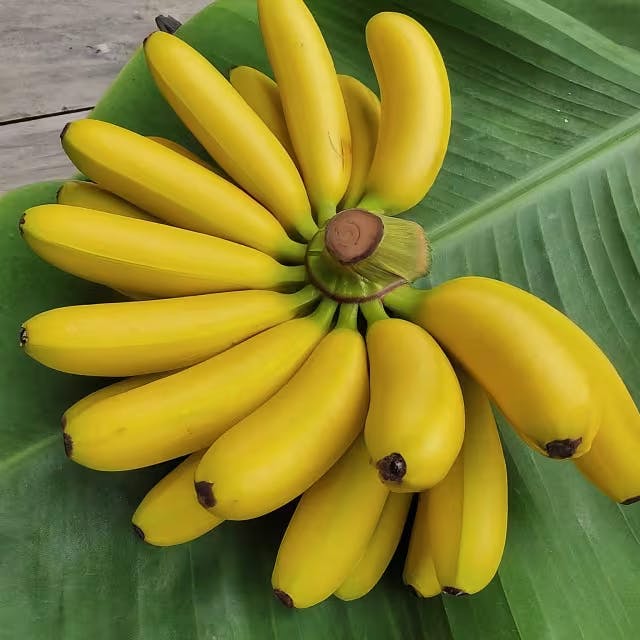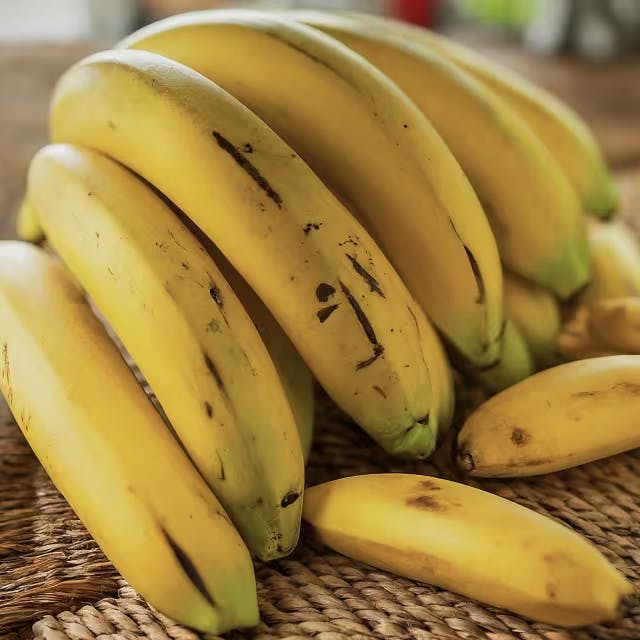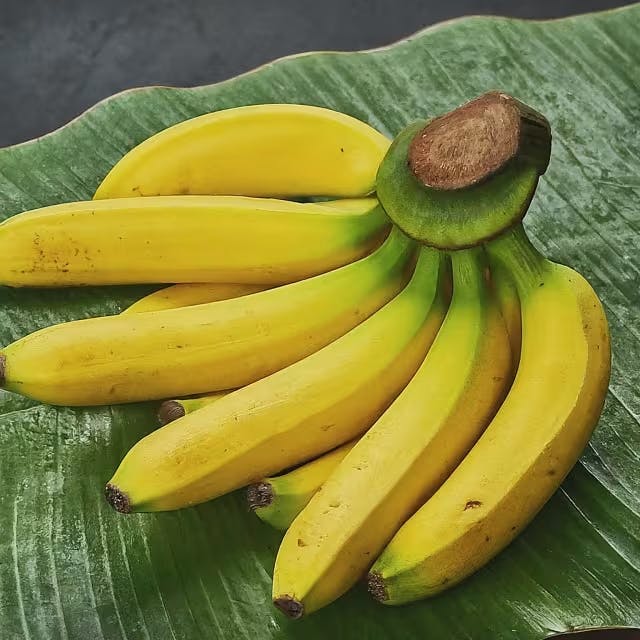Banana Varieties: Exploring the Diversity
Go4Turf
March 07, 2024

Exploring the diversity of banana varieties is not just about uncovering the spectrum of flavors, shapes, and colors available worldwide; it's also about understanding the challenges facing global banana production today. Recent comprehensive research in Indonesia—a crucial location where bananas are believed to have co-evolved with the Fusarium oxysporum f. sp. cubense (Foc) pathogen, responsible for the devastating Panama disease—sheds light on the complexity and variance within the banana kingdom. This deep dive into the genetics and distribution of Foc, revealing a high biodiversity of pathogenic strains, underscores the urgent need for diverse and resilient banana varieties in safeguarding the future of this staple fruit.
Key Takeaways
The diversity of banana varieties goes beyond taste and appearance, playing a crucial role in global food security and agricultural sustainability.
Indonesia's significant research into the banana's genetic battles with the Fusarium oxysporum f. sp. cubense pathogen highlights the importance of genetic diversity in combating diseases like the Panama disease.
Understanding the variety of bananas is not just for culinary exploration but is essential for developing disease-resistant and climate-resilient banana crops.
Different banana types offer unique benefits beyond their nutritional value, including varying levels of digestibility and health benefits.
Familiarizing oneself with popular banana varieties in the US and beyond can enhance dietary variety and culinary experiences.
Choosing the right banana variety involves considering taste preferences, usage (cooking vs. raw consumption), and nutritional needs.

Understanding the Diversity of Banana Varieties
The world of bananas is far more diverse than the typical yellow variety that graces grocery store shelves. This widespread fruit comes in a plethora of shapes, sizes, and flavors, each adapted to different climates and culinary uses. Among them, the Cavendish banana, primarily found in Western supermarkets, is just the tip of the iceberg. Exploring the full extent of banana diversity is not just a culinary adventure but also a critical endeavor amid concerns over the sustainability of banana production.
Recent studies, such as the one focusing on Fusarium oxysporum f. sp. cubense (Foc), reveal the fragile nature of banana diversity. This pathogen, causing the notorious Panama disease, threatens the global banana supply, especially the widely cultivated Cavendish variety. The research conducted in Indonesia, where bananas are believed to have co-evolved with Foc, underscores the importance of genetic diversity. With over 65% of the isolates identified as Tropical Race 4 (Foc-TR4), it signifies a looming challenge that could affect banana varieties worldwide. The findings from this study suggest a complex interaction between bananas and their pathogens and highlight the urgency for diversified cultivation strategies to prevent widespread outbreaks. Learn more about the study on Fusarium oxysporum and banana diversity.
As consumers, embracing a wider array of banana types can contribute to the conservation of biodiversity and the stability of banana production globally. From the starchy plantains, ideal for cooking, to the sweet and petite Lady Finger bananas, there's a variance to suit every taste and culinary need. Encouraging demand for diverse banana varieties can be a step towards sustaining this beloved fruit for future generations.

The Surprising Benefits of Different Banana Types
Exploring banana varieties reveals a spectrum of nutritional benefits that cater to different health needs and culinary uses. Each type possesses unique compounds offering an array of health advantages. For instance, dessert bananas, enjoyed mostly for their sweetness when ripe, provide instant energy due to their high carbohydrate content. Cooking bananas, like plantains, offer a rich source of resistant starch and fiber when eaten unripe or cooked, supporting gut health and offering a slower release of energy.
Diverse banana types also boast varying levels of antioxidants, including phenolics and carotenoids, which are instrumental in combating oxidative stress and reducing the risk of chronic diseases. The presence of phytosterols in bananas, which resembles cholesterol structurally, aids in maintaining healthy cholesterol levels by inhibiting its absorption in the intestines. This makes bananas a heart-friendly choice.
Here's a glance at some popular varieties and their health perks:
Banana Variety | Key Benefit |
Cavendish | High in Vitamin B6, aiding in mood regulation and sleep |
Plantain | Rich in vitamin A for eye health and skin integrity |
Red Banana | Contains more antioxidants than its yellow counterparts |
Lady Finger | Higher in sugar, offering a quick energy boost |
By incorporating different banana types into your diet, you're not just adding delicious flavors but also tapping into a wide range of health benefits. From boosting heart health to supporting digestion, the nutritional content of bananas makes them a versatile staple in a balanced diet. Explore more about the multifaceted roles of bananas in global nutrition and agriculture.

A Beginner's Guide to Popular Banana Varieties in the US
When exploring banana varieties in the US, it's fascinating to see beyond the common Cavendish banana that dominates grocery store shelves. Each variety offers unique flavors, textures, and uses in cooking, making them a delightful topic for anyone looking to diversify their fruit intake.
Cavendish: The go-to banana for many Americans, known for its sweet taste and firm texture. Ideal for snacking out of hand.
Red Banana: Smaller and plumper than the Cavendish, with a creamy texture and a hint of raspberry sweetness. They add a colorful twist to fruit bowls.
Manzano (Apple Banana): As the name suggests, this variety has an apple-like sweetness with a hint of strawberry. Dense and rich, they're perfect for baking or smoothies.
Plantain: Although technically a banana, plantains are starchy and not sweet when green. They're incredibly versatile in cooking, used in savory dishes like fried plantains or sweet desserts when ripe.
Each banana type brings its own flavor journey and benefits to the table. From the Cavendish's reliable sweetness to the intriguing tropical notes of the Manzano, there's a whole world of bananas out there waiting to be discovered. Whether you're baking, snacking, or cooking, incorporating different banana varieties can add exciting nuances to your meals.
How to Choose the Best Banana Variety for Your Needs
When selecting the perfect banana variety, consider a few key factors to match your culinary needs and personal preferences. For instance, the type of dish you intend to prepare plays a pivotal role. If you're looking to bake a batch of moist, flavorful banana bread, opt for the overripe Cavendish bananas, which are widely available and offer a sweet, intense banana flavor. On the other hand, if you're aiming to create a more exotic dish, you might want to explore rarer varieties. The Red banana, with its hints of raspberry and mango, can add an intriguing twist to fruit salads or desserts.
Texture and sweetness level are also important. For those who appreciate a firmer, less sweet banana, the plantain is a sturdy option, excellent for cooking or frying due to its lower sugar content. However, if sweetness is what you're after, the tiny yet potent Lady Finger banana, known for its sweeter and more aromatic taste, might just be your perfect match.
If you're eager to learn more about how bananas can elevate your gardening experience or dive deeper into the fascinating world of these fruits, you might find this piece on the world's largest herb and a nutritional powerhouse, the banana plant, quite enlightening. It offers a deeper understanding of banana varieties, shedding light on how they can impact both your diet and horticultural endeavors.
Above all, don’t hesitate to experiment with different banana varieties. Each one has its unique flavor and texture characteristics that can add delightful nuances to your dishes. Exploring the diversity of banana varieties not only enriches our culinary experiences but also plays a crucial role in sustaining global banana production against threats. By understanding and appreciating the wide range of shapes, sizes, and flavors available, consumers can support the resilience and stability of banana crops worldwide. Diversifying our banana consumption is a simple yet impactful step toward ensuring the long-term health and availability of one of the world's most beloved fruits.
Frequently Asked Questions
What are the different banana varieties beyond the common Cavendish?
Beyond the common Cavendish, there are several other banana varieties each with unique characteristics. The Red Banana has a hint of raspberry sweetness and a creamy texture. Manzano (Apple Banana) offers a sweet taste with notes of apple and strawberry, ideal for smoothies or baking. Plantains are starchy and less sweet when green, often used in savory dishes. Each variety not only adds diverse flavors and textures to meals but also comes with its own set of nutritional benefits, making them worth exploring.
How can diverse banana types contribute to environmental sustainability?
Diverse banana types play a crucial role in promoting environmental sustainability by preserving biodiversity and improving the resilience of banana crops against diseases such as Fusarium wilt. By supporting a wider range of banana varieties, consumers can contribute to reducing the reliance on monoculture farming practices, which can be devastating for ecosystems and local agriculture. Additionally, diversifying banana cultivation can help mitigate the risk of widespread crop failures, ensuring food security and the livelihoods of farmers who depend on banana farming.
What are the nutritional benefits of exploring various banana varieties?
Exploring various banana varieties offers a wide range of nutritional benefits including diverse levels of antioxidants, such as phenolics and carotenoids, which help combat oxidative stress. Each variety, from the sweet Cavendish to the starchy plantain, provides unique health perks including improved heart health and digestive support due to their fiber and phytosterol content. Incorporating different banana types into your diet can enhance nutritional intake, adding delicious flavors and health advantages, such as energy boosts, mood regulation, and support for eye health and skin integrity.
How does the vulnerability of bananas to diseases like Panama disease highlight the need for variety?
The vulnerability of bananas, particularly the Cavendish variety, to diseases like Panama disease underscores the critical need for diversifying banana cultivation. By embracing the rich variety of bananas, from the cooking-oriented plantains to the sweet Lady Finger bananas, we not only protect the global banana supply from devastating diseases but also contribute to the conservation of biodiversity. This diversity is not just a safeguard against pathogens but also an opportunity to explore nutritional and culinary riches offered by different banana types, ultimately supporting the sustainability and stability of banana production worldwide.
Which banana varieties are best for baking or cooking compared to those ideal for raw consumption?
For baking, the overripe Cavendish bananas are ideal as they are widely available and impart a sweet, intense flavor suited for moist baked goods. Conversely, plantains, with their starchy content and lower sugar levels, are better suited for cooking, offering a versatile base for both savory dishes and sweet desserts when ripe. Exploring rarer varieties like the Red banana can add unique flavors to desserts and fruit salads with its hints of raspberry and mango.